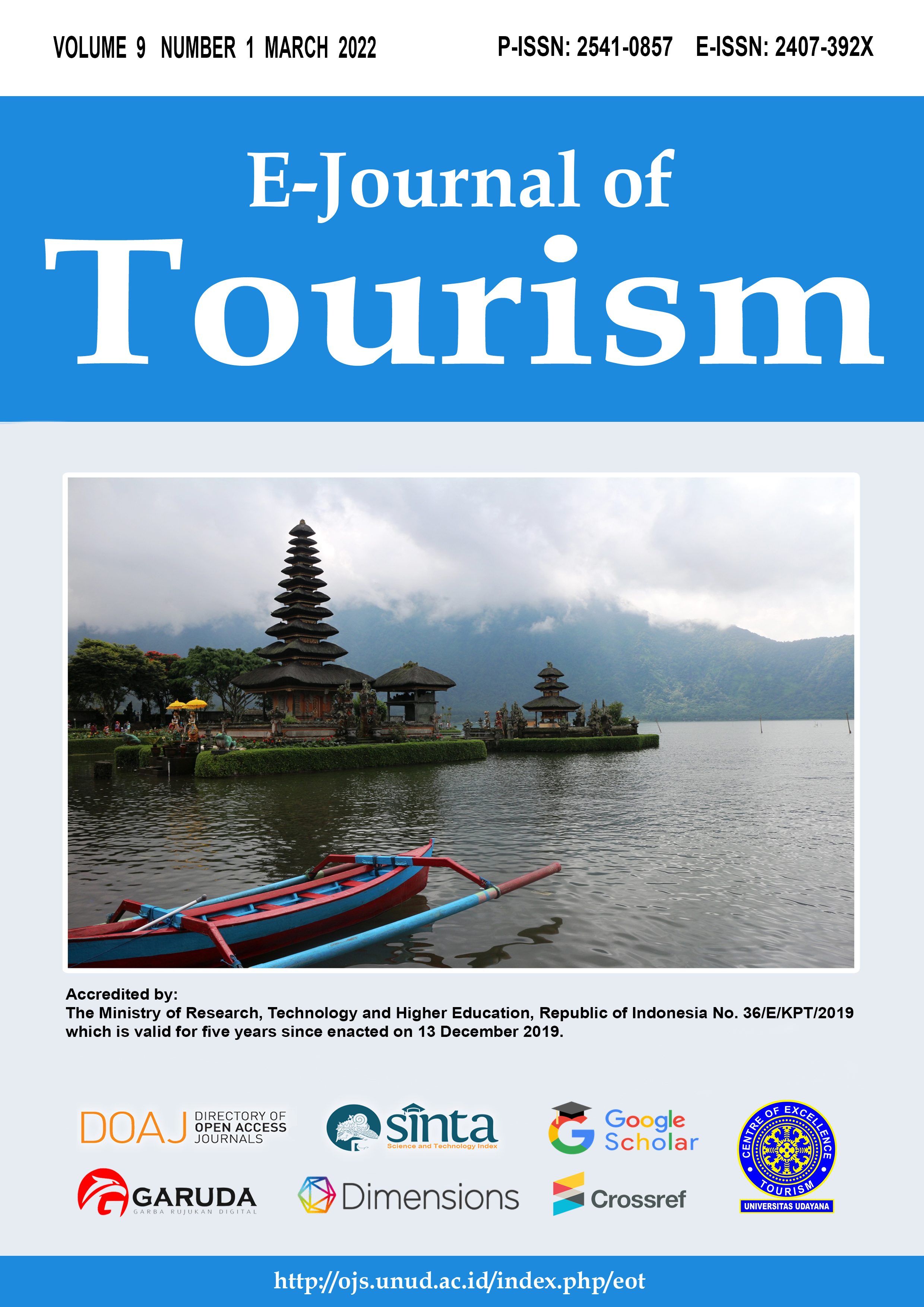Rural Creative Tourism as A Growth Triangle on The Slopes of Mount Sumbing, Magelang in The New Era of Normality
Abstract
The substantial goal is how the creative tourism in rural areas can develop through tourism activities where the tourist can develop the creative potential through active participation in the experience of learning arts, legacies, or special characteristics of the location as the destination. The implementation method explains clearly about the research subject during the pandemic: such as gathering information by identifying problems and asking questions so that answers will be found in the field, researchers will ensure the capability/feasibility of other variables. The variables in the study include: the component of destination requirements as an important element so that tourists feel satisfied and enjoy all the components contained in the destination. The results of the service activities for the development scheme of the assisted villages are used to determine the important elements in cruising tours so that a model of developing a tourism village development that is independent and prosperous is formed. Including policy elements at the government level and village level in the master plan for tourism development on the slopes of Mount Sumbing and its surroundings in a quality and sustainable tourism. Suggestions for the next research is to build relevant theories that can be used as a reference for the next researcher.
Keywords: creative tourism; independent tourism village.
Downloads

This work is licensed under a Creative Commons Attribution 4.0 International License.
The copyright of the received article shall be assigned to the journal as the publisher of the journal. The intended copyright includes the right to publish the article in various forms (including reprints). The journal maintains the publishing rights to the published articles.




















